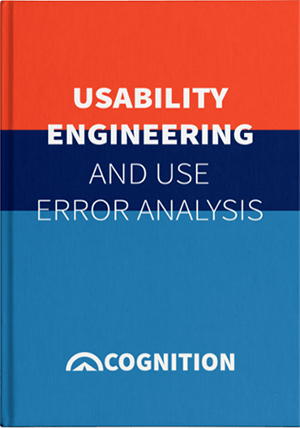Cognition Blog
Our blog navigates product development and compliance for the life science industry. Our solutions save time and money, delivering products with less risk.
At Cognition, our goal is to provide medical device and pharmaceutical companies with collaborative solutions to the compliance problems they face every day, allowing the customer to focus on their products rather than the system used to create them. We know we are successful when our customers have seamlessly integrated a quality system, making day-to-day compliance effortless and freeing up resources to focus on product safety and efficacy.

By:
Cognition Corporation
May 30th, 2019
Many life science organizations treat design thinking and design controls as separate product development stages. In reality, they can overlap; while this feels counterintuitive to some, it’s actually an important point that teams need to manage. For a more robust product development process, your teams should be thinking about how to use these two aspects of product development together. How design thinking can impact design controls is valuable to understand and evaluate as part of your organization’s plans for long-term growth.

By:
Cognition Corporation
May 28th, 2019
The pace at which news travels nowadays makes it difficult to keep up with the latest life science industry trends. However, here are some great resources that we think are worth your attention.

Subscribe to the blog and get this guide for free

Product Development | Thought Leadership
By:
Cognition Corporation
May 23rd, 2019
Life science product development is all about process: to ensure safety and effectiveness of your product, processes must be in place to maintain high quality in your design and development work. In smaller organizations, these processes and procedures can be fairly easy to control and manage. However, as your business grows, so do the scope and complexity of your development activities. To maintain and improve your life science product development processes, there are a handful of methods your organization can undertake.

By:
Cognition Corporation
May 21st, 2019
Managing multiple disciplinary teams to generate design data and documents for premarket submission and the actual production, servicing, and overall life cycle of your life science product is a big enough challenge already. When you have to manage that data across multiple, global worksites, the challenge becomes more complex.

By:
Cognition Corporation
May 14th, 2019
The input of users and patients is vital in life science product development. Yet how these inputs are understood and evaluated differs based on the information being sought out. An interesting subset of patient inputs is what’s known as patient preference. For life science organizations attempting to build innovative, patient-focused products, it’s important to understand what patient preference is, how regulatory bodies view it, and why it matters.

By:
Cognition Corporation
May 9th, 2019
A familiar issue to most life science organizations is compliance—making sure your products and services meet the regulatory requirements necessary for clearance to market. Especially for growing businesses, ensuring compliance with things like design controls can prove to be a real challenge. To improve your teams’ efforts with design controls compliance, here are some quick tips to employ in your organization.

By:
Cognition Corporation
May 7th, 2019
In March 2019, FDA’s Center for Devices and Radiological Health (CDRH) began their reorganization initiative first announced the year before. The Center has taken a major step forward in this process by launching the Office of Product Evaluation and Quality (OPEQ) in May 2019. With this new office, a number of important changes begin taking place at CDRH.

Thought Leadership | Risk Management
By:
Cognition Corporation
May 2nd, 2019
Implementing a robust risk management program into your life science organization requires a solid understanding of your needs, capacities, and goals. Whether to improve alignment with regulatory requirements and standards or adjust your overall risk procedures, identifying what you can do to bolster your current risk management programs is vital to promoting long-term growth. There are many ways out there to improve your risk management, but there are a few worth using as a baseline to build on.

By:
Cognition Corporation
April 23rd, 2019
Over the past few years, life science organizations have produced and marketed more products and services intended for mental health treatment. While certainly not a novel effort by the industry, the increased pace reflects cultural, economic, and scientific shifts that are changing the way we view and treat mental illness. For many organizations joining this new wave, the territory is unfamiliar and uncertain. However, there are a few baseline concerns that, once understood, can help development teams push for products meant to treat mental illness.

info@cognition.us
1 (781) 271-9300
24 Hartwell Avenue,
Lexington, Massachusetts 02421
©2025 Cognition Corporation | Privacy Policy